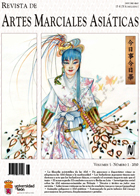Treinando a parte inferior do corpo para melhorar as posturas, deslocamentos e pontapés
DOI:
https://doi.org/10.18002/rama.v5i1.142Palavras-chave:
treino, métodos tradicionais, métodos orientais, métodos ocidentaisResumo
O propósito deste artigo é apresentar distintos métodos de treino para a parte inferior do corpo, para que os leitores possam favorecer o seu próprio treino. De uma forma geral, definir-se-á a parte inferior do corpo (da cintura para baixo). Os métodos de treino apresentados serão trabalhados, tendo em conta duas linhas principais de referência - o tempo ou história, e.g. métodos modernos versus métodos tradicionais, e a geografia e cultura ou “Oriente versus Ocidente”. Para facilitar a leitura, a apresentação seguirá uma sequência das ideias mais e menos frequentes para os praticantes de artes marciais. Deste modo, o leitor poderá articular conceitos conhecidos e desconhecidos sem perder a orientação do tema principal.Downloads
Métricas alternativas
Referências
Agrippa, C. (1553). Treatise on the science of arms with philosophical dialogue. Rome. Descargado de: http://kelly.dwarfworks.com/sca/Manuals/
Alexander, H., Draeger, D., and Chambers, A., (1974). Pentjak-Silat: The Indonesian fighting art. New York: Kodansha International.
Alter, J. (1998). The wrestlers body: Identity and ideology in north India. Berkeley, CA: University of California Press.
Anthony, D. (2007). The horse, the wheel, and language: How bronze-age riders from the Eurasian steppes shaped the modern world. Princeton, NJ: Princeton University Press.
Bernard, T. (1944). Hatha yoga. New York: Columbia University Press.
Charlemont, F. (2008). La Boxe Francais: Traité théorique et pratique. Fontaine, France: Emotion Primitive.
David-Neel, A. (1971). Magic and mystery in Tibet. New York: Dover Publications.
Delaney, F. (1992). Legends of the Celts. New York: Sterling Publishing.
Draeger, D., and Smith, R. (1968). Asian fighting arts. Tokyo: Kodansha International.
Evangelista, N. (1996). The art and science of fencing. Chicago: Masters Press.
Fairbairn, W. (1942). All in fighting. London: Faber and Faber.
Gardiner, E. (2002). Athletics of the ancient world. New York: Dover.
Gardiner, E. (1910). Greek athletic sports and festivals. London: Mcmillian and Co.
Gilbey, J. (1980). Western boxing and world wrestling. Berkeley, CA: North Atlantic Books.
Harris, A. (1972). Sport in Greece and Rome. Ithica, NY: Corrnell University Press. Inch, T. (1945). Spalding’s book on boxing and physical culture. Aldershot, England: Gale and Polden.
Jesse, J. (1974). Wrestling and physical conditioning encyclopedia. Pasadena, CA: Athletic Press.
Khedrup, T., Richardson, H., & Skorupsci, T. (1987). Adventures of a Tibetan fighting monk. Bangkok: Tamarind Press.
Kinsella, T. (2002). The tain. Oxford: Oxford University Press.
Majno, G. (1991). The healing hand: Man and wound in the ancient world. Cambridge, MA: Harvard University Press.
Norbu, T. (1987). Tibet is my country. Sommerville, MA: Wisdom Books.
Poliakoff, M. (1987). Combat sports in the ancient world. New Haven, CT: Yale University Press.
Smith, R. (1968). Secrets of Shaolin Temple boxing. Rutland, VT: Charles E. Tuttle.
Smith, R. (1990). Chinese boxing: Masters and methods. Berkeley, CA: North Atlantic Books.
Smith, R. (1986). Western boxing and world wrestling: Story and practice. Berkeley, CA: North Atlantic Press.
Wan, Laisheng (1983). Inner and outer work. Beijing: China Agricultural University Press.
Downloads
Publicado
Como Citar
Edição
Secção
Licença
Direitos de Autor (c) 2012 Allen Pittman

Este trabalho encontra-se publicado com a Licença Internacional Creative Commons Atribuição-NãoComercial-CompartilhaIgual 4.0.
Os autores que publicam nesta Revista estão de acordo com os seguintes termos:
- Os autores cedem, de forma exclusiva, os direitos de exploração (reprodução, distribuição, comunicação pública, transformação) à Universidade de Léon, podendo estabelecer, em separado, acordos adicionais para a distribuição não exclusiva da versão do artigo publicado na Revista (por exemplo: alojar no repertório institucional ou publicá-lo num livro), com o reconhecimento da publicação inicial nesta Revista.
- O trabalho encontra-se na Creative Commons Attribution-Non Commercial-Share Alike 4.0 International License. Pode-se consultar aqui o resumo e o texto legal da licença.
- Permite-se, e sugere-se, que os autores difundam electronicamente as versões pré-impressão (versão antes de ser avaliada) e pós-impressão (versão avaliada e aceite para publicação das suas obras antes da sua publicação), favorecendo a sua circulação e difusão, e com ela o possível aumento da sua citação e alcance pela comunidade académica.











